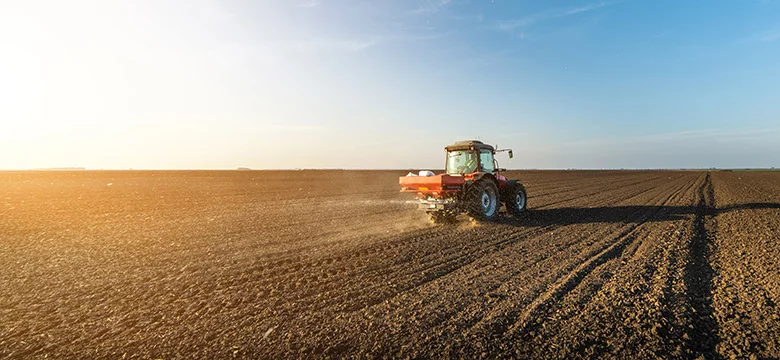3 reasons why you should make the switch to digestate in 2020

Digestate use is on the rise on farms across the UK, and is set to continue to “spread” in popularity as an alternative to artificial fertilisers in 2020. In 2018 alone AWSM Recycling spread 325,000 tonnes of digestate, a number that is on the rise.
Digestate is a waste product formed during anaerobic digestion, and is made up of indigestible materials and dead microorganisms.
There are multiple benefits to using digestate, that make it worth your while to consider switching to the organic alternative in the new year. Our top three reasons to switch are:
- • Digestate is practical and low cost
- • Healthier soil to encourage crop growth
- • Easy and convenient to store
Practical and low cost
Digestate is far more economical than artificial fertilisers. This is due to decreased production and spreading costs, which makes it cheaper per acre for most farmers.
Andrew Rennie, farmer and AD operator at Gask Farm commented that “…we used to spend £52,000 a year on fertilisers, but we’ve been using digestate for 6 years and now we only spend £10,100. You have to balance these savings against the costs of application, but on wheat and barley crops we only apply a fifth of the fertiliser that we used to.”
This reinforces the fact that digestate can save your farm money both through the reduced cost of the organic fertiliser, and also through requiring a smaller application when compared to artificial alternatives.
Here at AWSM Farming, we offer an expert spreading service that can be tailored to suit the needs of your land.
Healthier soil to encourage crop growth
Digestate is very nutrient-rich – containing high levels of nitrogen, phosphate and potash – which can boost the performance of your soil and encourage better crop growth, which can lead to improved harvests and crop yields.
With food-based digestate, as much as 80% of the total nitrogen content is readily available, making this a great replacement to “bagged” fertiliser. The presence of organic matter also means that it has a far more positive effect on the local ecosystem, which encourages healthier worm activity, improved nutrient uptake and better rooting structures for plants.
Audrey Litterick of Earthcare Technical Ltd noted that with trials undertaken with spring barley grown with fibre digestate, there were “excellent yields, with no impact on crop quality.”

Easy and convenient to store
The ease and convenience of storing digestate makes the product an appealing option for many farmers, as it can be stored in either a custom-dug “lagoon”, covered with a floating lid, or in a temporary silo.
It is important to apply digestate at the right time, as without spreading your fertiliser at a time when crops are growing rapidly and can make the most of the nutrients, you may be missing out on reaping all of the benefits of your digestate.
Through storage, farmers can wait for the optimum time for application and react quickly, as there is no need to source fertiliser and wait for its arrival. It has also been found that storing digestate increases the absorption of nitrogen by crops, which ultimately increases the value of those crops, giving you a greater economic return.
At AWSM Farming we offer a wide range of storage solutions and tanks, that are custom-made to be used with slurry and digestate. We can also install and construct bespoke storage solutions, such as lagoons and unique silo systems.
In summary…
There are many benefits to switching from artificial fertilisers to digestate in 2020. Making the swap could see your farm save money, increase crop growth, improve soil quality and reap the benefits of on-site storage for years to come.
Join the growing number of farmers who are trading in bagged fertilisers for the organic solution of digestate in 2020, to save money, improve your harvest and become more sustainable.





